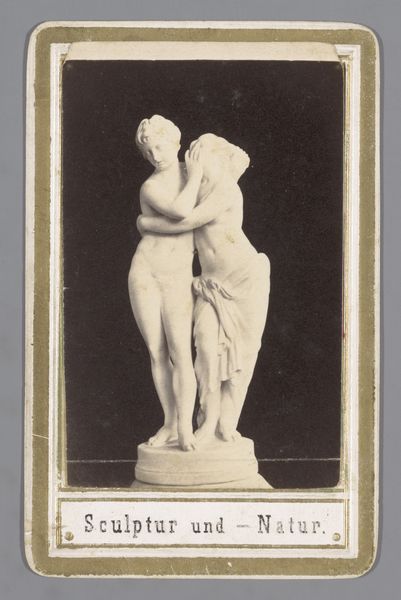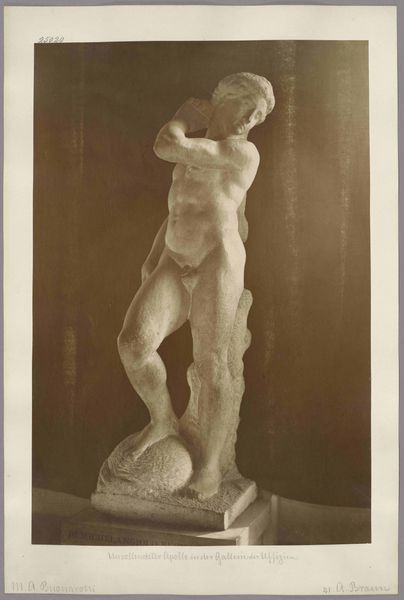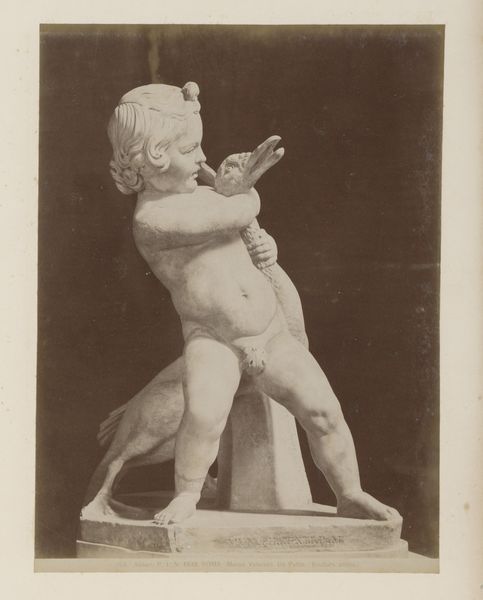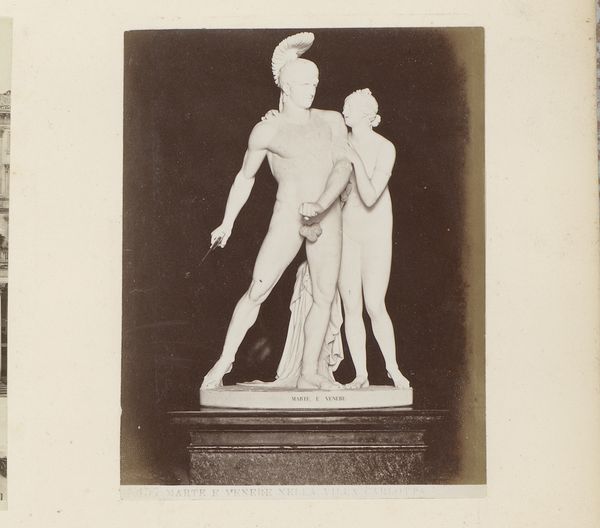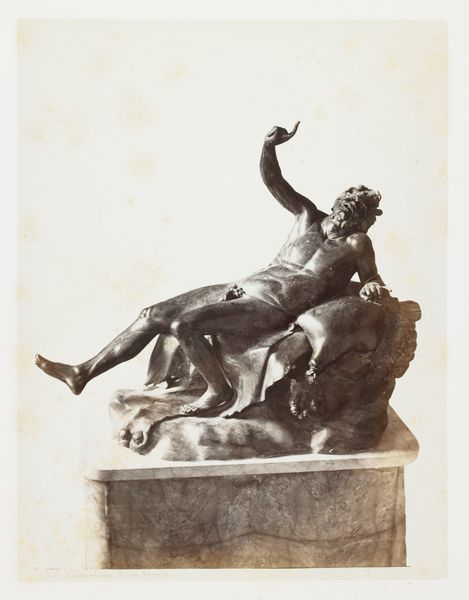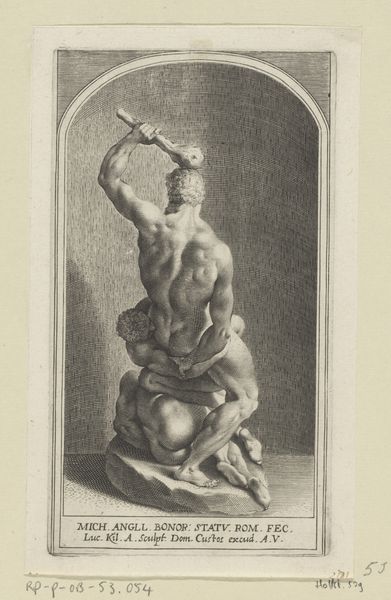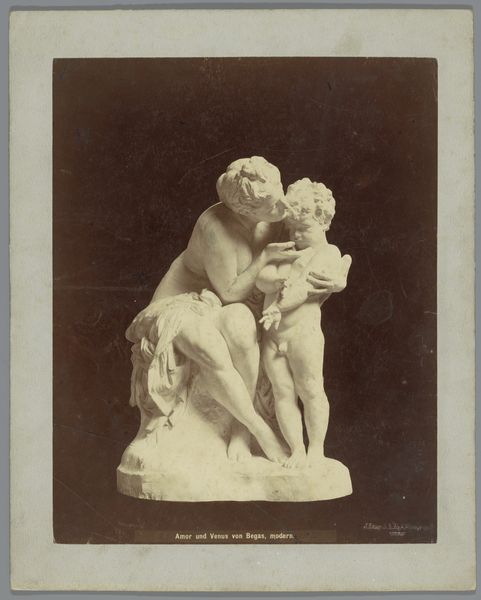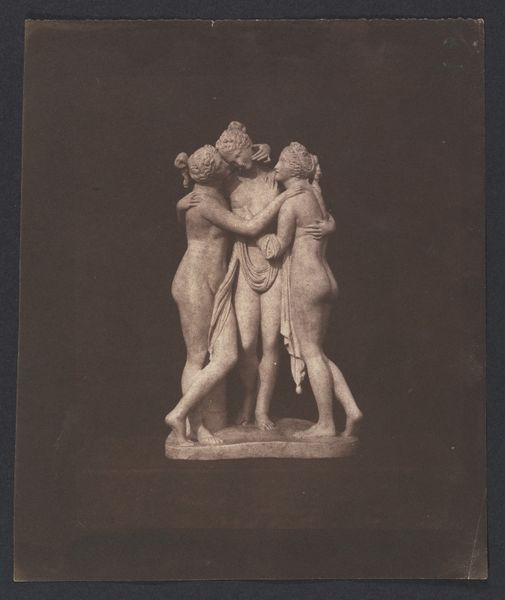
photography, sculpture
#
portrait
#
greek-and-roman-art
#
classical-realism
#
figuration
#
photography
#
sculpture
#
nude
Dimensions: height 252 mm, width 188 mm, height 327 mm, width 241 mm
Copyright: Rijks Museum: Open Domain
Curator: The image before us, titled "Griekse sculptuur van twee worstelaars," a photograph by Fratelli Alinari dating from around 1880 to 1895 and housed in the Rijksmuseum, features a sculptural grouping rendered in warm sepia tones. What's your first take? Editor: My immediate impression is tension—the image feels poised. The sepia tone lends the photograph an antique aura that underscores its dramatic impact, evoking struggles both physical and, perhaps, sociopolitical. Curator: The composition, with its intertwining figures frozen mid-action, absolutely captures the intensity of classical wrestling. We're reminded of ideals surrounding athleticism and male competition in ancient Greece. Editor: Precisely, the hyper-masculine archetype. Wrestling becomes this very public display—the body a stage for prowess and power, perpetuating a singular ideal that simultaneously elevates and confines. I'm thinking of how the sculpted musculature and dynamic posing would've contributed to constructing normative masculinities during this period and even today. Curator: And how those ideals are preserved through photographs, extending that performance, or maybe solidifying that canon. Think, too, of the potential symbolic weight inherent to the act of wrestling: conquest, dominance, and the pursuit of excellence deeply woven into Western culture. The nudity of the wrestlers brings out the idealised forms, an emblem of beauty, and perhaps freedom from societal constraints. Editor: Indeed. And this raises important questions about the male gaze, right? I mean, the viewer is implicitly positioned as voyeur. So we also must question whose perspective we privilege when representing nude male figures in classical art forms and photography? We often celebrate and study Classical Realism and portraiture, but it is crucial that we consider the impact of visual art, what that may signify or enforce within culture over time, to avoid perpetuating outdated, potentially damaging values or notions about class and the male body. Curator: That said, I can’t help but be in awe of the enduring appeal and how it's used to evoke an age thought to have mastered an appreciation for the beauty of form and the struggle of humankind against each other. Editor: Fair point. It reminds us that art's legacy can't be viewed through a single lens—and demands rigorous contextual scrutiny. It's about creating room for these conversations, so that Classical Realism in the digital age remains progressive, diverse and, of course, historically informed.
Comments
No comments
Be the first to comment and join the conversation on the ultimate creative platform.

